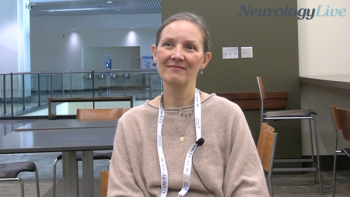
Cilta-Cel Benefit Consistent Across High-Risk Subgroups of Multiple Myeloma
Ciltacabtagene autoleucel significantly enhances survival rates in relapsed/refractory multiple myeloma, outperforming standard treatments across various patient subgroups.
Ciltacabtagene autoleucel (cilta-cel; Carvykti) improved progression-free survival (PFS) compared with standard of care (SOC) across all subgroups of patients with relapsed/refractory multiple myeloma, including in those with extramedullary disease (EMD) and regardless of prior lines of therapy, according to a subgroup analyses from the phase 3 CARTITUDE-4 trial (NCT04181827) presented at the
In the analysis of the study, cilta-cel consistently improved PFS with trends toward improvement in overall survival (OS) compared with SOC across all subgroups, including those with high-risk cytogenetics, EMD, and regardless of whether it was given in the first-, second-, or third-line setting. In those with high-risk features, the median PFS with cilta-cel was 37.1 months compared with 10.3 months for SOC. In the standard risk group, the median PFS with cilta-cel was not yet reached compared with 20.6 months with SOC.
“This is a superior therapy in terms of efficacy for PFS and there was a trend for overall survival in each of these subgroups,” lead investigator Surbhi Sidana, MD, from Stanford University School of Medicine, said in an interview about the study. “As cilta-cel is now available as second-line therapy, after first relapsed, these data are very reassuring, especially seeing that patients with 1 prior line of therapy also have a PFS benefit vs 2 or 3. I think these data are very reassuring to use earlier line cilta-cel.”
In the CARTITUDE-4 trial, 419 patients were randomly assigned to receive a single infusion of cilta-cel (n = 208) or SOC therapy (n = 211). For the cell therapy product, patients first underwent aphaeresis, bringing therapy, and lymphodepletion with 300 mg/m2 of cyclophosphamide and 30 mg/m2 of fludarabine prior to infusion. Of those randomized, 176 were infused with cilta-cel. In the control arm, SOC consisted of pomalidomide (Pomalyst), bortezomib (Velcade), and dexamethasone or daratumumab (Darzalex), pomalidomide, and dexamethasone. In this arm, 208 of the randomized patients received treatment.
Characteristics were well balanced across the 2 arms of the study. In the cilta-cel arm, the median age of patients was 61.5 years. The ECOG status was 0 (54.8%), 1 (44.7%), and 2 (0.5%) and the ISS stage was I (65.4%), II (28.8%), and III (5.8%). Soft tissue plasmacytomas were present for 21.2% of patients and 59.4% were considered to have high-risk cytogenetics. High risk cytogenetics were defined as del(17p), t(4;14), t(14;16), or gain/amp(1q) by fluorescence in situ hybridization. A quarter of patients were triple-class exposed (25.5%) and 6.7% were penta-class exposed. Nearly a third had received only 1 prior line of therapy (32.7%).
Improvements in PFS were seen across all high-risk features for cilta-cel vs SOC. For those with del(17p), the median PFS was 29.9 months compared with 8.7 months with SOC. For those with t(4;14) the median PFS was 37.1 months vs 6.7 months, for cilta-cel and SOC, respectively. For those with gain/amp (1q) the medians were 37.1 months and 10.3 months, for cilta-cel and SOC, respectively. In those with 2 or more cytogenetic abnormalities, the median PFS was 29.8 months with cilta-cel vs 6.7 months with SOC.
Median OS was not yet reached for cilta-cel across any classifier of risk. In the SOC group for high-risk features, the median OS was 38.0 months. In the standard risk arm, the median OS was not yet reached for SOC. Across both groups, the hazard ratios favored the CAR T-cell therapy, although data were not yet mature.
Improvements in PFS and OS with cilta-cel vs SOC were also seen across those with EMD. In the EMD group (N = 39), the median PFS was 12.6 months with cilta-cel vs 4.0 months with SOC. For those with non-EMD disease (N = 380), the median was not yet reached with cilta-cel vs 12.2 months with SOC. Similar trends were seen in OS, although medians were not yet reached for cilta-cel in those with and without EMD. The median OS for those with EMD in the SOC arm was 15.7 months and was not yet reached in the non-EMD group.
“While this is a small subset, patients with cilta-cel did much better than SOC. That 12 months [with cilta-cel] tells us that this is an area that we need to improve upon and add some different strategies,” said Sidana. “Many of these patients didn’t get to one year and some progressed between apheresis and CAR T, and I think this is the area that we now need to focus on.”
Medians were not yet reached when looking across prior lines of therapy for PFS and OS in the cilta-cel arm. Across each line, HR favored cilta-cel over SOC, with the benefit being more pronounced in later line settings.
“This analysis did not focus on safety of the general cohort but there were no different safety signals seen with this analysis,” added Sidana.
Reference:
Sidana S, Martinez-Lopez J, Khan A, et al. Ciltacabtagene autoleucel (cilta-cel) vs standard of care (SOC) in patients (pts) with relapsed/refractory multiple myeloma (MM): CARTITUDE-4 survival subgroup analyses. J Clin Oncol. 2025;43 (suppl 17; abstr 7539). Doi:10.1200/JCO.2025.43.16_suppl.7539
Newsletter
Stay at the forefront of cutting-edge science with CGT—your direct line to expert insights, breakthrough data, and real-time coverage of the latest advancements in cell and gene therapy.











































